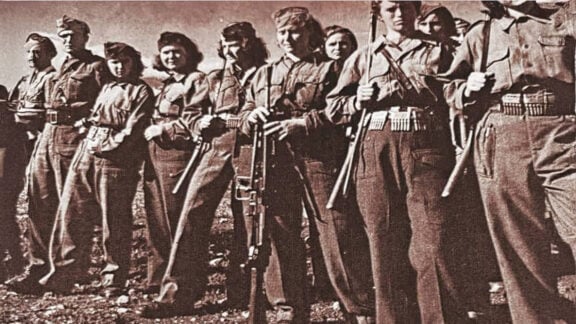Koulouri of Thessaloniki
Made from wheat flour, yeast, water, salt, sugar and sesame seeds, this circular bread snack is the best product to appreciate the simplicity of taste.
It is said that koulouri is mentioned in texts even before Byzantine times and became known in Greece after refugees from Minor Asia arrived in Thessaloniki.
Since then, it has grown to be one of the most popular Greek brekkies, found in bakeries or sold by koulourtzides, the street vendors.
Cheese products
Greece’s mountainous regions both in the mainland and the islands are famous for their quality cheese products.
A piece of cheese served with a slice of bread and a handful of olives can be a nutritious alternative for breakfast and keep you full until lunch.
Ladotyri is a hard type of cheese preserved in oil and is originally produced in the island of Lesvos.
In Epirus you will find, among other kinds, galotyri, with its creamy texture and distinctive sour taste.
If you are looking for a milder and sweeter taste, try manouri, a whey cheese originating from central and western Macedonia, esteemed for its health-giving characteristics.
Rizogalo
Thessaly, in central-eastern continental Greece has inherited a strong tradition of dairy products thanks to the nomadic or semi-nomadic origins of its farmers (Sarakatsani, Vlahi and others.)
Rizogalo is typically eaten in Thessaly both as breakfast and as a dessert. It is essentially a rice pudding made from mixing rice with water and milk and topped with lots of cinnamon.
Bougatsa
Two cities of northern Greece, Serres and Thessaloniki, claim to have established the first bakeries to make bougatsa.
Its name derives from the word ‘πογάτσα’ and its roots can be found in the Byzantine era. Variations exist in many cuisines of the Balkans, but the Greek version as we know it is said to have originated in Istanbul, brought to Greek territory by the migrants of Asia Minor.
With the machine-made phyllo prevailing nowadays, the places left selling hand-made bougatsa are highly sought-after but still exist in small villages.
Depending on the different fillings, the pastry can be sweet or savory. The most common versions of bougatsa are filled with custard cream, feta cheese or minced meat.
Stafidopsomo
A ‘best-seller’ in bakeries across Greece, stafidopsomo comes from the simple yet delicious combination of raisins and bread dough.
It is usually baked in small rolls and depending on the variation can contain walnuts or can made from wheat, barley or corn flour.
Pasteli
Pasteli dates back in antiquity, with Herodotus being the first historian to mention it.
Among the Greek cities, Kalamata is said to have one of the longest traditions in making pasteli.
It is probably the equivalent to a cereal bar, only in its purest and healthiest version, since the authentic homemade recipe consists only of honey and sesame seeds without any sugar or additives.
It contains calcium, magnesium, iron, phosphorus and dietary fibre and provides you with the necessary ‘fuel’ to kick-start your day.
We have also gathered a few breakfast recipes so tasty that can actually get you out of bed in the morning and say Καλημέρα with a smile.
We’ll start with the recipe to the most perfect Omelette kayana
Also called strapatsada, this omelette requires minimum ingredients and time to make.
Ingredients:
3 whole eggs
1 long green pepper
1 red Florina pepper
1 tomato
50g feta cheese
10g salt
10g pepper
Method:
1. Finely chop the peppers and the tomato into cubes.
2. In a bowl beat the eggs and add the salt and pepper.
3. In a frying pan that is hot put some olive oil and saute the peppers, add the tomato and pour the eggs.
4. Stir continuously until the mixture is cooked.
5. Finally add the grated
feta cheese.
* Sources: greekbreakfast.gr, artos-sath.gr, lactimed.eu, thessalonikiartsandculture.gr, messiniantaste.gr, vimagourmet magazine,mygreekdish.com






